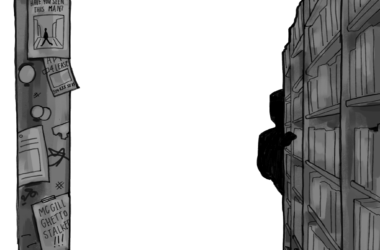Monarch butterflies are currently at their lowest population on record, according to recent data from the World Wildlife Fund Mexico.
The current colony size is 1.92 hectares, down from the previous low of 2.19 hectares in 2004 and far down from the recorded high of 21.6 hectares in 1995. Problematic population dynamics, damage to their native habitat across the United States and Canada, and damage to overwintering sites have all had dramatically negative effects on the butterflies’ population.
The monarch population census is conducted by measuring the total area each colony covers. There are reasonably accurate population measurements going back 16 years, and in that time, the population has declined rapidly. The average size of the population over the last 16 years has been 7.44 hectares.
“What’s a bit ominous is that the last six years have been below average,” says Lincoln Brower, a renowned monarch expert and professor at Sweet Briar College in Virginia.
Additionally, the migratory phenomenon – in which up to 60 million butterflies migrate from southern Canada and the northern United States to overwintering sites in Mexico each fall, and head back north in the spring – could be at risk, experts say.
The main factor in this year’s decline is likely the weather, with extreme conditions facing the monarchs along the entirety of their migration path.
Drought in Texas last spring reduced milkweed growth – the only plant monarchs will lay their eggs on. The bad weather continued to impact them on the journey north, with colder-than-usual temperatures impeding progress. The monarchs’ rate of development is very temperature-sensitive; in a warm summer, they might produce four generations, while in a colder summer they might produce only two. The cumulative effect would have slowed them down considerably, Brower says.
The ability of the population to recover is uncertain. According to experts with the WWF, a smaller population now doesn’t necessarily mean a smaller population next summer; the population could recover given the right weather conditions.
“It’s not to say don’t worry, these fluctuations happen naturally – because they do,” says Steven Price, the senior director of conservation science and practice with WWF Canada, a conservation and advocacy group. “[But] hopefully we haven’t lost so much winter habitat that one time when they go down they go down below a level where they can’t recover.”
There are large non-migratory monarch populations in the Caribbean, southern Mexico, and Australia, as well as other parts of Canada and the U.S., making species extinction unlikely, experts say. However, the migratory pattern – which is unique, as monarchs are the only example of long-distance insect migration – is at risk.
“Its migratory behavior for an invertebrate, for an insect, is a truly incredible phenomenon,” says Christopher Buddle, an associate professor in McGill’s Department of Natural Resource Sciences. “It’s not the same individuals that fly north as those that fly south, so it’s an incredible aspect of biology and natural history. It’s fairly unique, and I think that warrants it attention.”
Monarchs leave Canada and the northern parts of the United States in the fall and migrate almost 2,500 kilometres to central Mexico, where they spend the winter in colonies in high-altitude fir forests. The ones that survive the winter fly to Texas in late February and March, producing a new generation whose offspring eventually make it back to Canada.
The migration pattern was only discovered in the 1970s through the efforts of Fred Urquhart, a professor in the Zoology Department at the University of Toronto. Urquhart, working with his wife, Nora, and several volunteers, tagged thousands of monarchs with tiny adhesive “Send to Zoology University Toronto Canada” labels, and tracked the locations from which people mailed the dead butterflies.
“The ones that fly back to the same places in Mexico have never been there before. No one has a clue how they get to the same trees every year,” says Brower.
While weather can impact the population on a year-by-year basis, more generally, monarchs have been suffering from a loss of habitat.
In their overwinter home in central Mexico, deforestation has contributed to population decline. The trees provide shelter for the butterflies, keeping them from getting too warm or too cold. The trees also provide protection from storms, such as one in 2002 that spread across the Tropic of Cancer and killed 80 per cent of the colonies’ population.
“If there’s too much illegal logging or too many holes cut in the blanket cover or too many forest fires that can now escape up these degraded and destroyed tracks in the forest, we may well degrade that wintering home up to the point where not many monarchs can survive a cold blast,” says Price.
Saving the overwintering areas is important not just for preserving the monarchs and the migratory phenomenon, but also because the colonies attract a large number of tourists in the winter months.
“It’s a phenomenon that’s incredible,” says Buddle. “It’s beautiful, it’s magical, so that habitat has to be conserved.”
In 2007, Mexican President Felipe Calderón pledged $4.6-million US towards advertising for the Monarch Butterfly Biosphere Reserve, which covers a 50,000-hectare area in which there are many monarch colonies.
The initiative was initially meant to curb illegal logging by bringing tourism money into an otherwise poor area. In the first year of the program, the WWF reported a 48 per cent drop in illegal logging.
Along the rest of the migratory path, generically engineered crops have also negatively impacted monarch habitat. Milkweed, commonly found in and adjacent to agricultural fields, is the only food that monarch caterpillars can eat, and the only plants females will lay their eggs on.
A study in 2000 showed that agricultural habitats were very important for the monarch population, because of the presence of milkweed in agricultural fields. However, genetically modified crops such as soybeans and corn that are resistant to post-emergence herbicides have meant that milkweed in those fields has been all but eliminated.
“The use of [genetically modified] crops has meant that there’s less milkweed in agricultural fields,” says Karen Oberhauser, a professor in the Department of Fisheries, Wildlife and Conservation Biology at the University of Minnesota.
“At the current level of loss of habitat, the individual monarch’s ability to reproduce on average is down by 20 per cent,” says Brower.
Outside of an agricultural context, milkweed is still considered a weed, but by reducing pesticide and herbicide use, there’s a greater chance of preserving the monarch. Experts have been encouraging farmers and garden owners to plant milkweed to help the species.
And there are other factors, such as climate change, whose full effects have not yet been felt. It has the potential to impact the overwintering grounds, the migratory routes, and whether the flowers monarchs feed off when they head south – primarily asters and goldenrod – are in bloom.
“Nobody knows what the hell’s going to happen with climate change,” says Brower.
The result is that the future of the monarch is somewhat uncertain. It is also of little ecological significance, say experts. Monarchs are an emblematic species, and are usually the only butterfly the average North American knows. However, monarchs are generalist pollinators, which means that no specific flower depends on them for its survival. In addition, as far as researchers know, monarchs don’t play a role in controlling the milkweed population in the same way that other herbivores play important roles in controlling the spread of their primary source of food.
The result is that monarchs seem relatively unimportant.
“Some species play more of a keystone role in ecosystems, and monarchs aren’t one of the
m,” says Oberhauser. “[But] do we only conserve things that play what we would consider important roles, or is just their existence value enough? There is not an easy answer to that question. If we pull monarchs out of the system, we wouldn’t really notice – except monarchs would be gone, and that’s important.”







